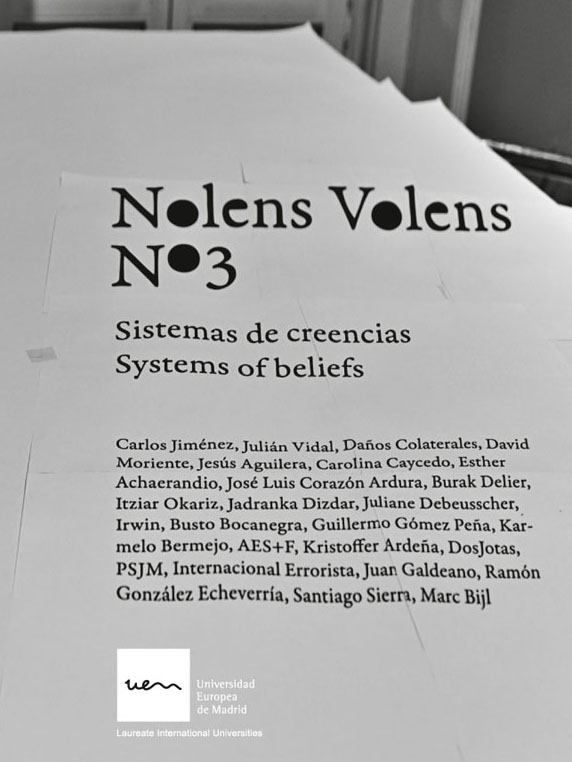
For this issue Nolens Volens, the contributors were asked to focus their work on “systems of beliefs”, on the different types of faith that may shape our social organization.
In this broad framework, the contributors’ approaches have turned out to be diverse, although two main lines of interest may be pointed out: on the one hand, the work of those who have focused on art itself as a system of beliefs and, on the other, those who have used their artistic practice to question more all-encompassing dogmas.
In a recent interview, Canadian sociologist Sarah Thornton, author of the book Seven Days in the Art World, defined the art-system as “intensely hierarchical”, adding “but with a fairly volatile hierarchy, to tell the truth. The manner in which the artists build their reputations has much of belief, of believing in all this. It has to do with who writes about them, which curators select them, which museums have their works. And all this is really fascinating from the sociological point of view”.
Following this premise, more than evident for any actor involved in the art institution, certain contributors with an attitude of self-criticism have analyzed not only the beliefs sustaining contemporary art – which are often based on pure marketing strategies or spurious interests, as Carlos Jiménez points out – but also those that are the basis of the narrations that confirm the History of Art in itself. As Julian Vidal suggests, these seem to drift in the same direction, as has been seen in recent case of The Colossus, as of recently no longer attributed to Goya.
Nevertheless, when we are told that the art system is “intensely hierarchical”, it seems that this implicitly obviates the fact that our whole system of social organization is also “intensely hierarchical” and that, as in many other aspects, art is not independent of the society in which it is generated. Here too, other positions are presented; precisely those which, accepting that the art system is another place of beliefs that reproduces the same functioning that any other faith, involved as it is in the capitalist cosmovision, use it as an indeterminate space from which to question both the social status quo and the imagery that sustains it
Lastly, and within the theme concerned, this issue includes a previously unpublished interview dating from 2006 with the Slovenian group Irwin, part of the NSK, whose work unfolds precisely where art and ideology intersect.